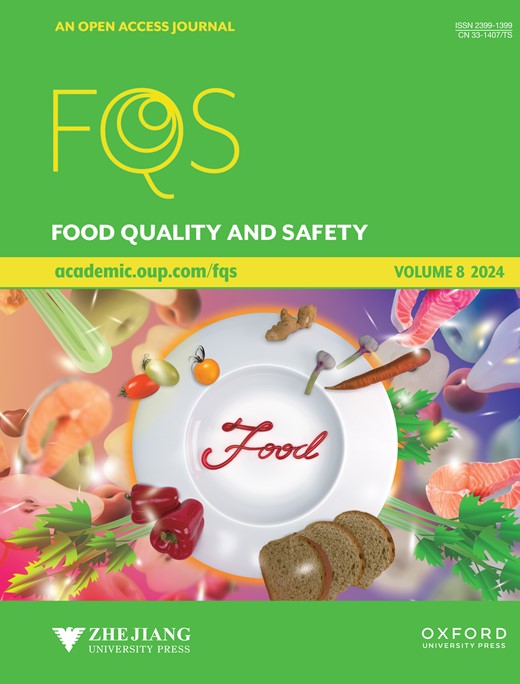基于高斯过程回归的近红外光谱果实性状预测及置信度分析
IF 3
3区 农林科学
Q2 FOOD SCIENCE & TECHNOLOGY
引用次数: 0
摘要
利用近红外(NIR)光谱检测水果性状可能会遇到超出所构建的校准模型泛化能力的分布外(OOD)样本。因此,需要对给定的预测进行置信度分析,但这不能通过使用常用的近红外光谱校准模型来完成。为了解决这一问题,本文研究了高斯过程回归(GPR)在近红外光谱水果性状检测中的应用。用GPR的均值和方差分别作为预测值和置信度。为了证明这一点,使用了与芒果干物质含量测量相关的真实近红外数据集。与偏最小二乘回归(PLSR)相比,GPR在分布内(ID)测试集的均方根误差(RMSE)降低了约14%。与无置信度分析相比,利用GPR方差去除异常样本,使得GPR和PLSR在混合分布检验集上的RMSE分别降低了~58%和~10%(当第一类错误率设为0.1时)。与传统的单类分类方法相比,GPR的方差可以有效地剔除预测差的样本。本文章由计算机程序翻译,如有差异,请以英文原文为准。
Gaussian process regression for prediction and confidence analysis of fruit traits by near-infrared spectroscopy
Detection of fruit traits by using near-infrared (NIR) spectroscopy may encounter out-of-distribution (OOD) samples that exceed the generalization ability of a constructed calibration model. Therefore, need confidence analysis for a given prediction, but this cannot be done by using common calibration models of NIR spectroscopy. To handle this issue, this paper studied the Gaussian process regression (GPR) for fruit traits detection using NIR spectroscopy. The mean and variance of the GPR were used as the predicted value and confidence respectively. To show this, a real NIR data set related to dry matter content measurements in mango was used. As compared to the partial least squares regression (PLSR), GPR showed ~14% lower root mean squared error (RMSE) for the in-distribution (ID) test set. Compared with no confidence analysis, using the variance of GPR to remove abnormal samples made GPR and PLSR showed ~58% and ~10% lower RMSE on the mixed distribution test set respectively (when the type 1 error rate was set to 0.1). Compared with traditional one-class classification methods, the variance of the GPR can be used to effectively eliminate poorly predicted samples.
求助全文
通过发布文献求助,成功后即可免费获取论文全文。
去求助
来源期刊

Food Quality and Safety
FOOD SCIENCE & TECHNOLOGY-
CiteScore
7.20
自引率
1.80%
发文量
31
审稿时长
5 weeks
期刊介绍:
Food quality and safety are the main targets of investigation in food production. Therefore, reliable paths to detect, identify, quantify, characterize and monitor quality and safety issues occurring in food are of great interest.
Food Quality and Safety is an open access, international, peer-reviewed journal providing a platform to highlight emerging and innovative science and technology in the agro-food field, publishing up-to-date research in the areas of food quality and safety, food nutrition and human health. It promotes food and health equity which will consequently promote public health and combat diseases.
The journal is an effective channel of communication between food scientists, nutritionists, public health professionals, food producers, food marketers, policy makers, governmental and non-governmental agencies, and others concerned with the food safety, nutrition and public health dimensions.
The journal accepts original research articles, review papers, technical reports, case studies, conference reports, and book reviews articles.
 求助内容:
求助内容: 应助结果提醒方式:
应助结果提醒方式:


